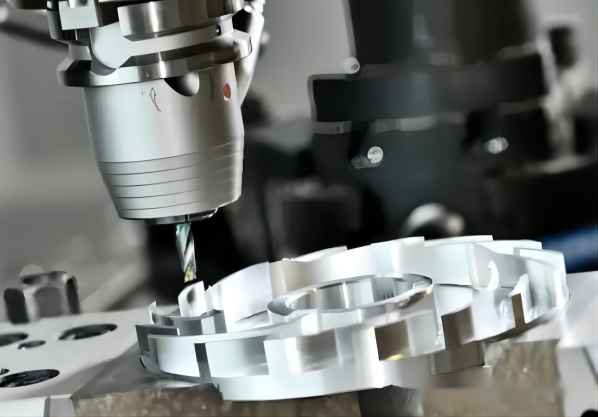
Privacy statement: Your privacy is very important to Us. Our company promises not to disclose your personal information to any external company with out your explicit permission.
Understanding the complexities and limitations of CNC machining is critical to ensuring the best balance between process cost, time and quality. Many projects will be more expensive on otherwise economical 3-axis milling. Likewise, simply choosing 5-axis milling for every project is the equivalent of exterminating cockroaches with a machine gun. Doesn't sound very effective, does it?
That's exactly why it's vital to understand the key differences between 3-, 4-, and 5-axis machining. Doing so ensures that the best machine is chosen for any given project without any compromise on basic quality parameters.
Here are the main differences between the various types of CNC machining.
1. Working Guidelines
All CNC machining works on the same principle. A computer-guided cutting tool rotates around the workpiece to remove material. In addition, all CNC machines use M-code or G-code to interpret the movement of the tool relative to the workpiece.
2. During CNC machining
The difference lies in the additional ability to rotate around different planes. both 4-axis and 5-axis CNC milling allow for rotation around different coordinates, a quality that allows for the creation of more complex shapes with relative ease.
3. Precision and Accuracy
CNC machining is known for its precision and low tolerances. However, the type of CNC does affect the final tolerances of the product. 3-axis CNC, while very accurate, has a greater potential for random errors as the workpiece is constantly repositioned. For most applications, this margin of error is negligible. However, for sensitive applications related to aerospace and automotive applications, even the smallest deviations can cause problems.
4. CNC Accuracy
Both 4- and 5-axis CNC machining do not have this problem because they do not require any repositioning. They allow cutting in multiple planes on a single fixture. It is also worth noting that this is the only source of quality differences in 3-axis machining. Other than that, the overall quality in terms of precision and accuracy remains the same.

5. Field of application
Differences in CNC types are related to the nature of the product rather than the industry wide application. For example, the difference between 3-, 4- and 5-axis milling products will be based on the overall complexity of the design, rather than the industry itself.
A simple part in aerospace can be developed on a 3-axis machine, while a complex part in any other field may require the use of a 4- or 5-axis machine.
6. Cost
Cost is one of the main differences between 3-axis, 4-axis and 5-axis CNC milling. 3-axis machines are naturally more economical to purchase and maintain. However, the cost of using them depends on factors such as fixtures and operator availability. While operator costs remain the same for 4- and 5-axis machines, fixturing still accounts for a significant portion of the cost.
On the other hand, 4- and 5-axis machining technologies are more advanced and have better features. As a result, they are naturally expensive. However, they bring a lot of functionality and are viable options in many unique situations. One of these, previously discussed, could theoretically be designed using a 3-axis machine, but would require extensive custom fixturing. This increases the overall cost and makes 4 or 5 axis machining a more viable option.
7. Lead Time
In terms of overall lead time, continuous 5-axis machines provide the best overall results. With no downtime and single-step machining, they can machine even the most complex shapes in the shortest amount of time.
Continuous 4-axis machines come in a close second, as they allow for rotation in one axis and can only process flat angular features in a single pass.
Finally, 3-axis CNC machines have the longest lead times because cutting is done in stages. Additionally, the limitations of 3-axis machines mean that workpieces require a lot of repositioning, which leads to an increase in overall lead time for any project.
November 17, 2024
November 16, 2024
August 27, 2021
August 26, 2021
PEEK ball is a special type of ball made of polyether ether ketone (PEEK), which has excellent chemical stability, abrasion resistance, and high temperature resistance.PEEK ball is widely used in...
PVDF Application Areas Different models of PVDF products are suitable for different application scenarios. According to application fields, PVDF can be divided into conventional grade products and...
Application Performance Advantages of MC nylon MC nylon is a new type of engineering plastics, due to its outstanding comprehensive performance, so that its status in engineering plastics is rapidly...
Types of nylon: 1. Nylon - 6 (PA6) Nylon -6, also known as polyamide -6, that is, polycaprolactam. Translucent or opaque opalescent resin. 2. Nylon - 66 (PA66) Nylon-66, also known as polyamide-66,...
Email to this supplier
November 17, 2024
November 16, 2024
August 27, 2021
August 26, 2021

Privacy statement: Your privacy is very important to Us. Our company promises not to disclose your personal information to any external company with out your explicit permission.

Fill in more information so that we can get in touch with you faster
Privacy statement: Your privacy is very important to Us. Our company promises not to disclose your personal information to any external company with out your explicit permission.